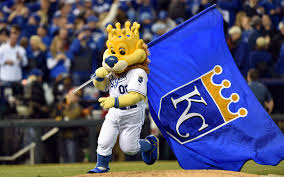The following article appeared in the Topeka Capital-Journal on Sept. 29 – you can read it here.
The 2018 Kansas City Royals were a disaster. But you wouldn’t know it by talking to the guys taking the field the past two months.
That’s because a large number of the guys in the clubhouse now weren’t there when the Royals bumbled to a 27-68 record at the All-Star break. Since then, Ryan O’Hearn and Adalberto Mondesi have brought superstar production to Kansas City. Brett Phillips, Rosell Herrera and Brian Goodwin have brought speed and athleticism (and the swagger that comes with it). And Brad Keller, Heath Fillmyer and Jorge Lopez have infused the starting rotation with youth and potential.
Talk to any of the youngsters, and they see this season as an opportunity.
“The new guys, the young guys, have to prove that we belong here, and demonstrate what we can do for the team moving forward,” said Phillips, who, along with Lopez, was acquired in late July in a trade for Mike Moustakas. “So we have a lot of motivation, a lot of energy, to go out there each day regardless of how many games the team has won or lost.”
Pitcher Ian Kennedy said that while the first half of the season was disappointing to the veterans assembled to start the year, the transformation of the roster points to brighter days ahead. After struggling mightily at the start of the season, Kennedy sat out much of the year with injuries. He observed the change from the dugout.
“The group we started with just struggled all around. We couldn’t click,” Kennedy said. “Now as the team starts to transform, the young guys are all hungry because they want a spot next year. They want to prove that they can do something up here. I’m really excited for our future. I watched the transition while I was on the disabled list, and it’s been fun to see.”
Keller, who has been a leader of the youth movement, said that winning at a respectable clip this fall is going to catapult the team into greater success moving forward.
“The vibe around here these days is just awesome,” said the 23-year-old. “How we’re conducting business from then to now is a night and day difference. You can see it on the field, how much fun we’re having. It’s going to give us confidence moving forward. We feel like, give us a full year together and see what can happen.”
As Keller and company wrap up the Royals’ 50th season, a healthy dose of perspective is in order. While the overall record won’t be much to celebrate, there is a silver lining to the dark cloud of 2018.
The Class of ‘69
There have certainly been some bleak periods for the expansion team awarded to Kansas City at major league baseball’s 1967 winter meetings. But of the four teams created at that meeting – the San Diego Padres, Seattle Pilots and Montreal Expos being the other three – the Royals are unquestionably at the head of the class.
First of all, two of the clubs bolted their original homes for greener pastures. The Pilots barely paused long enough to unpack their bags in Seattle before moving to Milwaukee to become the Brewers in 1970. The Expos were competitive for a time, but couldn’t win over their Canadian hosts and morphed into the Washington Nationals in 2005.
The Royals have played in four World Series, winning two. Of the other three 1969 expansion clubs, the Padres lost in the 1984 and 1998 series, and the Brewers lost in the 1982 series. So the Royals have played in more World Series than the other three combined, and been the only one to win even one championship.
Of the 30 teams in major league baseball, 12 have reached fewer World Series than the Royals, some of which have been around for much longer.
We’ve been here before and felt far worse
The Royals have lost 100 or more games four times previously. With two games left, this Royals team will escape the embarrassment of being worst in team history. They lost 106 in 2005.
It hurt when, after failing to capitalize on building blocks like Mike Sweeney, Johnny Damon, Carlos Beltran and Jermaine Dye, the 2002 Royals dropped 100 for the first time in team history.
2004 was dreadful because, after the fool’s gold of 2003 led fans to believe the team was actually competitive, the 104 losses exposed that a quick rebuild was not possible.
Things couldn’t have looked more bleak than they did in 2005, when they lost 106 games and hardly had anyone of real major league caliber. 2006 was only slightly better, when the Royals again lost an even 100.
So with a bunch of young studs playing, and winning, in the second half, 2018 doesn’t seem that bad. With Keller, Mondesi and friends emerging as building blocks, there is hope for next year.
As is often said, a losing season doesn’t have to be a lost season. It doesn’t feel like a lost season in the clubhouse these days.
